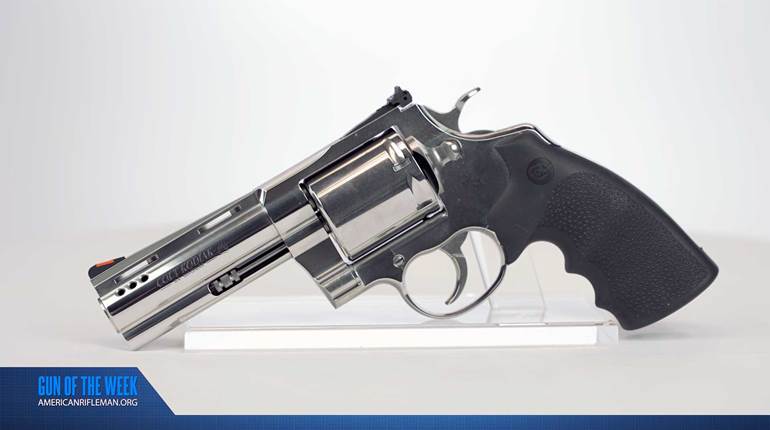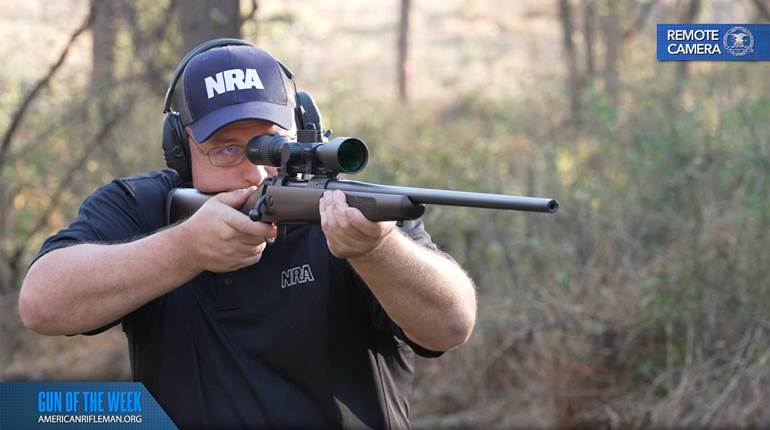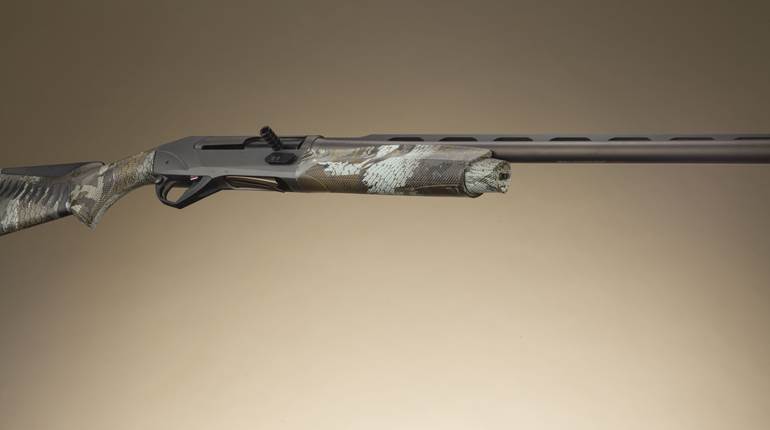In the 1870s, Colt needed a double-action revolver design to compete with many of the emerging double-action revolvers on the market, particularly a number of competitors in Great Britain. The Model 1877 was the answer, and the most famous of the Model 1877 revolvers was the "Lightning." Watch our "American Rifleman Television" I Have This Old Gun segment above to hear the story of Colt's famous Lightning revolver.
"The Colt Lightning was actually only one version of the Model 1877," American Rifleman Executive Editor Evan Brune said. "There were three different models. There was the Lightning, there was the Thunderer, and there was the Rainmaker. And these names were not names that Colt gave to these guns. These were names that were bestowed upon each of these different models by a major Colt distributor at the time, B. Kittredge & Company. And it was really a kind of a marketing ploy. And this was done in order to distinguish the different chamberings of the Model 1877."

Though these names were never officially used by Colt, the Lightning became the colloquial name for the .38 Colt-chambered Model 1877, while the Thunderer and Rainmaker were chambered in .41 Colt and .32 Colt, respectively.
"They were made from 1877 up to the beginning of the 20th century," American Rifleman Field Editor Garry James said. "And the strange thing is the little Model 1877s, especially in the Lightning model, sold very well in Great Britain where you could buy a real barn burner of a double-action."
Despite its popularity, the Colt Lightning wasn't without its drawbacks. Its small frame design and complicated mechanism led to reliability issues and parts breakages.

"In order to make these guns work as double-action/single-action designs, Colt had to incorporate a number of different parts that were all tensioned by different springs, and these were very small, very delicate components, and they broke easily, especially the springs," Brune said. "And when the springs broke, it relegated the gun to a simple single-action mechanism, which meant you could still use it, it just wasn't what Colt designed it to be."
To watch complete segments of past episodes of American Rifleman TV, go to americanrifleman.org/videos/artv/. For all-new episodes of ARTV, tune in Wednesday nights to Outdoor Channel 8:30 p.m. and 11:30 p.m. EST.










![Auto[47]](/media/121jogez/auto-47.jpg?anchor=center&mode=crop&width=770&height=430&rnd=134090788010670000&quality=60)
![Auto[47]](/media/121jogez/auto-47.jpg?anchor=center&mode=crop&width=150&height=150&rnd=134090788010670000&quality=60)











